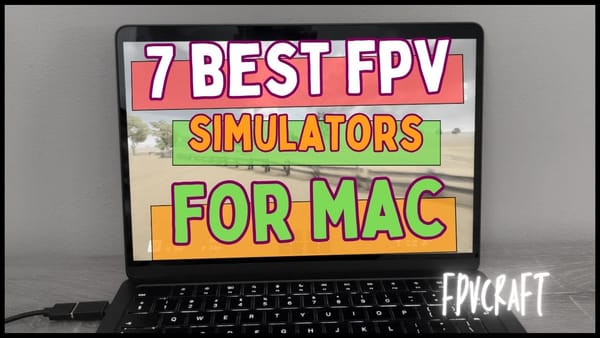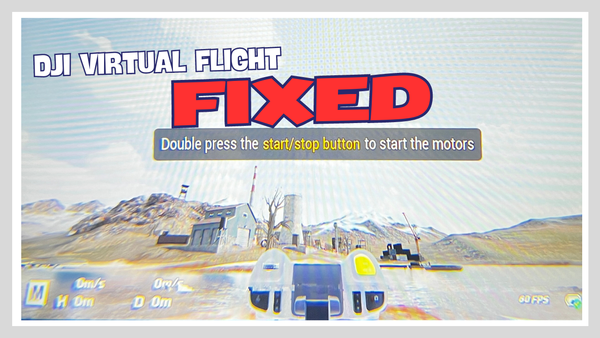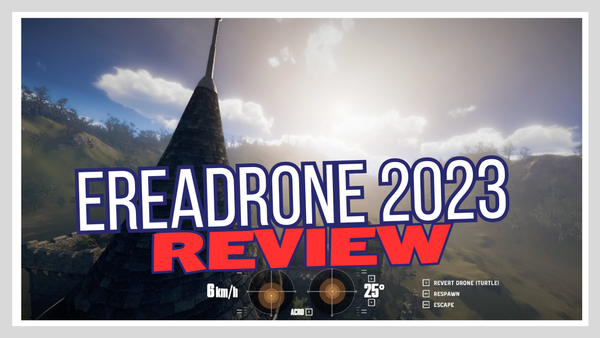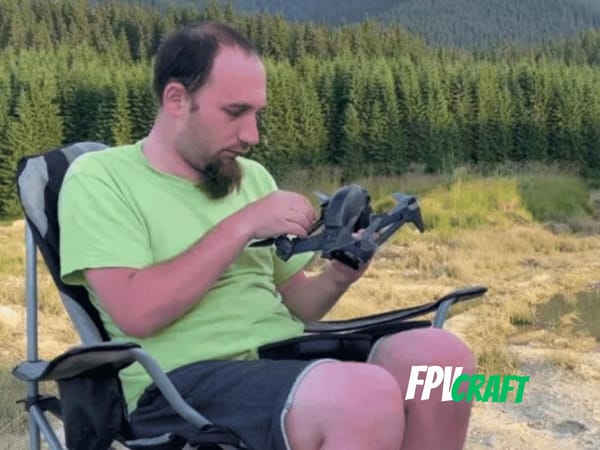9 Things to Consider Before You Start Your FPV Journey
If you're aiming to get into the FPV hobby, here are 9 things I want to share with you before you get started.
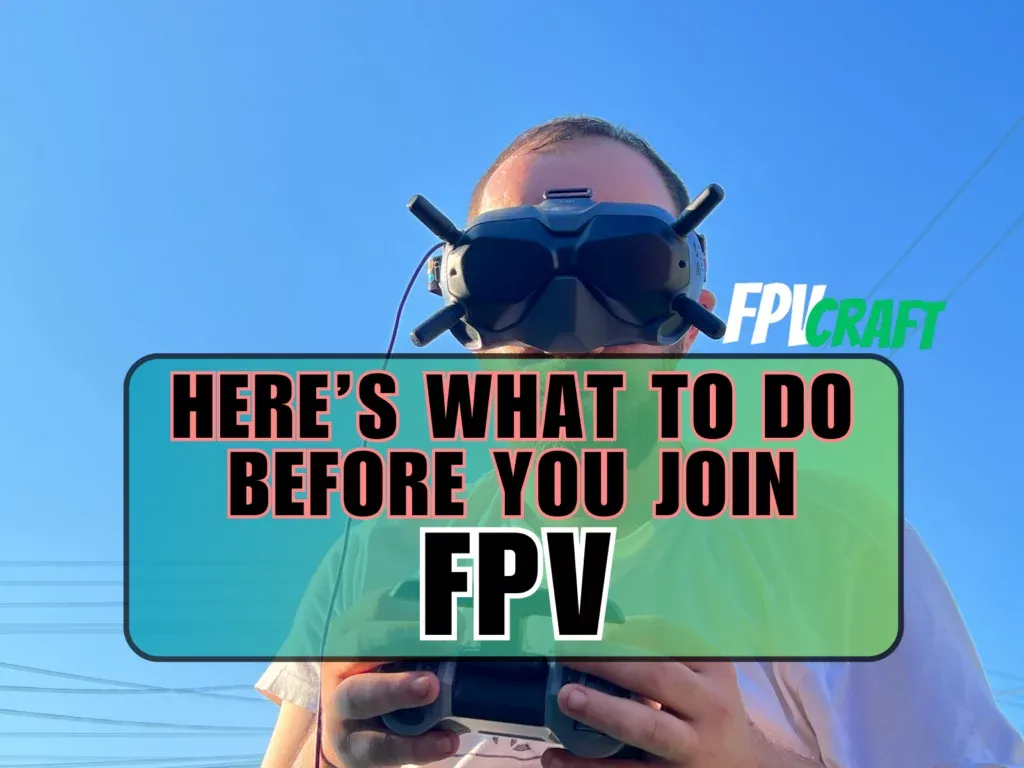
Joining the FPV world and getting ready to purchase your first FPV drone should not be the first thing to do.
There is much stuff you should focus on to ensure you’re on the right track, and not only is FPV for you, but you’ll also have an easier time with your journey.
Therefore, without further ado, here we share with you 9 things you should do or consider before you start your FPV journey.
1. Start with an FPV Simulator
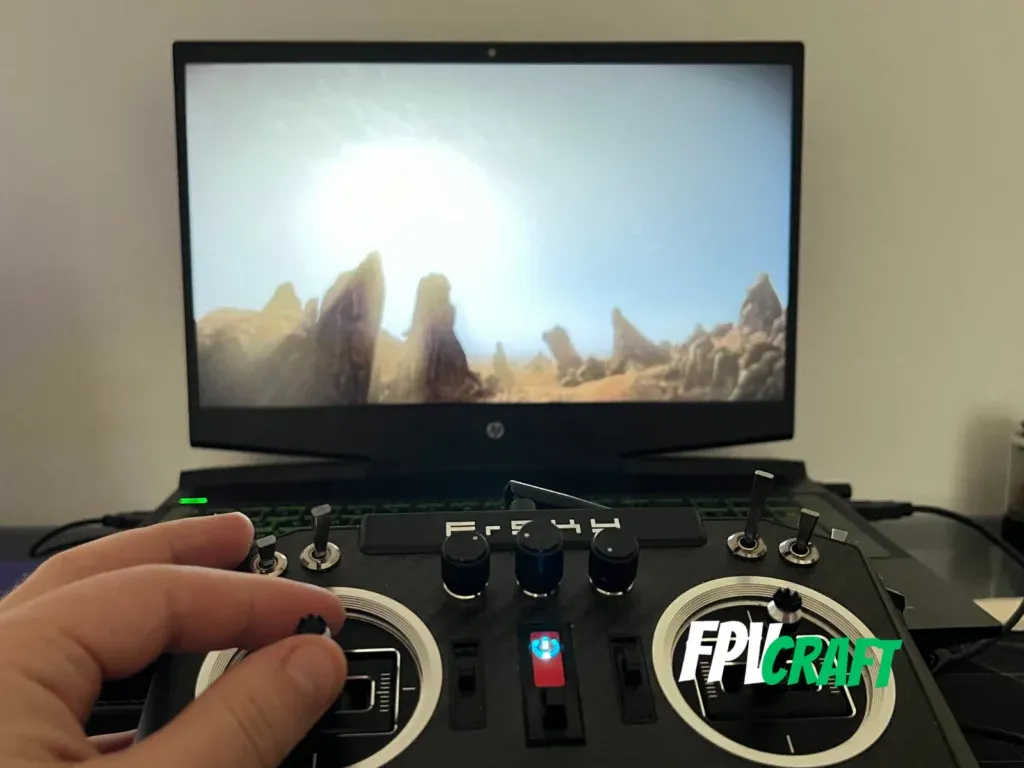
This is the most classic approach, but don’t ignore it. You have surely heard about FPV simulators. Maybe you even have some basic training in it.
But without practicing for at least a few hours in an FPV simulator, we can guarantee you will not be able to fly FPV in acro mode. Nobody can, as this is a new skill to be learned.
Regular practice in FPV simulators will surely help you improve your skills even if you don’t have your drone yet or haven’t made any plans on what FPV drone you should buy.
But there’s a catch.
In order to benefit the maximum from any FPV simulator (except for DJI Virtual Flight), you have to buy an FPV Remote Controller.
Of course, if you have an Xbox or PlayStation controller at hand, those are usually compatible with almost all FPV simulators.
However, in this case, you will have the throttle gear centered and must twitch a few settings to make it work properly, and it is not going to be as far as good as practicing with an FPV controller.
But it’s better than nothing. Now, hold on.
Don’t go on Amazon or eBay and buy the first controller you see to start practicing in FPV simulators.
You need to make a plan on which drone you should go first if you’re going with the DJI FPV, Avata, or custom FPV drones, as you will have to look into protocol compatibilities.
For instance, I will recommend your setup to run on ELRS or Crossfire radio protocol if you go with a custom drone, so buy such a controller to start practicing, and then the same controller can be used to fly your drone.
However, suppose you find some cheap FPV controller second-hand, a bargain. In that case, even if you’re not going to use it in your setup, that’s a terrific alternative, as you can sell it back after practicing FPV simulators and getting your actual FPV transmitter to use with your drone. You can also use it to continue practicing in simulators at times.
Therefore, if you’re looking and wondering which FPV simulator to get, I strongly recommend reading the following article (or watching the video)
» RELATED: 5 Best FPV Drone Simulators
2. Decide which way to go (DJI or non-DJI)
Now, there’s a split faction of FPV pilots. Some of them would recommend going either with the DJI FPV or Avata (mostly Avata), while most of them would go with a custom FPV drone.
If you’re looking to go with the DJI FPV or Avata, here are your pros and cons:
Pros
- ✅ Simple way to get started in FPV
- ✅ These are ready-to-fly drones; no setup is required.
- ✅ The goggles can be used with many digital setups
- ✅ It can be used in normal mode on top of manual (acro)
- ✅ Excellent transmission, GPS, image quality
- ✅ Longer battery life
Cons
- ❌ It could be expensive to start with
- ❌ You’ll have difficulty to repair these drones by yourself
- ❌ Challenging to customize these drones.
» RELATED: DJI Avata vs. DJI FPV (In-Depth Comparison)
Instead, if you plan to go with a custom FPV drone, such as Cinebot 30, Tinyhawk 2, or anything else like a custom one, here are your pros and cons.
Pros
- ✅ More accessible to repair, change parts, or upgrade
- ✅ Cheaper to make the setup
- ✅ More resistant to crashes
- ✅ Can buy lots of Lipo batteries, as they are cheap
- ✅ Better to freestyle and race
- ✅ Greatly customizable
- ✅ An authentic approach to getting into FPV
Cons
- ❌ More complex to setup and troubleshoot
- ❌ These Lipo batteries are a real danger
- ❌ More problematic to achieve long-range flights
If you’re not yet ready to go with the custom FPV drones, the DJI Avata is more resistant to crashes and safer to fly around than the DJI FPV.
But I recommend that most FPV pilots use a custom FPV drone and make their own setup.
You’ll be in control of it; you can upgrade and change parts cheaply if you crash your drone; it is more fun to fly and is the barrier to being an actual FPV pilot.
If you crash the DJI FPV or Avata and it’s damaged, then you may have to send your drone back for repairs, and DJI will always overcharge you more than you would invest in repairing a custom FPV quad.
3. Going with a custom drone? Don’t build it first.
If this is the way you would like to go, with a custom quad, that’s super great!
But don’t build it first. I know many FPV pilots recommend building your own quad and getting used to soldering, setting up, and changing parts.
However, as a first-time FPV pilot, you have to get used to FPV drones and how they fly before getting yourself into the ultimatum complex approach of building a quad.
Then you will know if what you built flies well or needs some twitching to make it work better.
Don’t worry. You’ll have plenty of time to learn how to build and repair in this hobby.
4. Choosing between digital and analog FPV drones
Digital DJI transmission, Walksnail, HDZero, or Analog.
You’ll have to look into these four main transmission systems and choose one.
Picking the transmission system is essential before even considering buying your first drone.
Analog transmission is cheaper to buy, the parts are more affordable than DJI (VTX module, camera), and the Analog goggles cost only a fraction of what the DJI or other digital goggles cost.
It’s best to freestyle and race; analog has lower latency, but the image quality is poor compared to digital; if you compare it, it’s similar to a 1990 CRT TV trying to get a signal on your favorite program.
Digital (DJI) offers you the best experience flying an FPV drone with high-quality image transmission, being able to see good details and framerate, and it’s a true way to get an immersive experience when flying FPV.
But digital DJI has a bit more latency than analog as the video feed is compressed before being transmitted to the goggles, and it will cost you a lot more.
So, expect to invest so much more in digital transmission.
Usually, many times, only the DJI transmission system will cost you as much as an entire analog FPV drone.
Walksnail and HDZero only relate to a smaller number of FPV pilots, and you won’t find as many pre-build FPV drones with these modules.
But keep in mind that for any or each type of transmission system, you will need to have a compatible FPV headset.
So that’s why choosing a drone based on the FPV transmission system is an excellent way to have more similar drones that work with the same goggles in the future, knowing that FPV goggles can sometimes be very expensive.
» RELATED: Why FPV Drones Fly Differently than Standard Drones
5. Making a plan to ensure compatibility
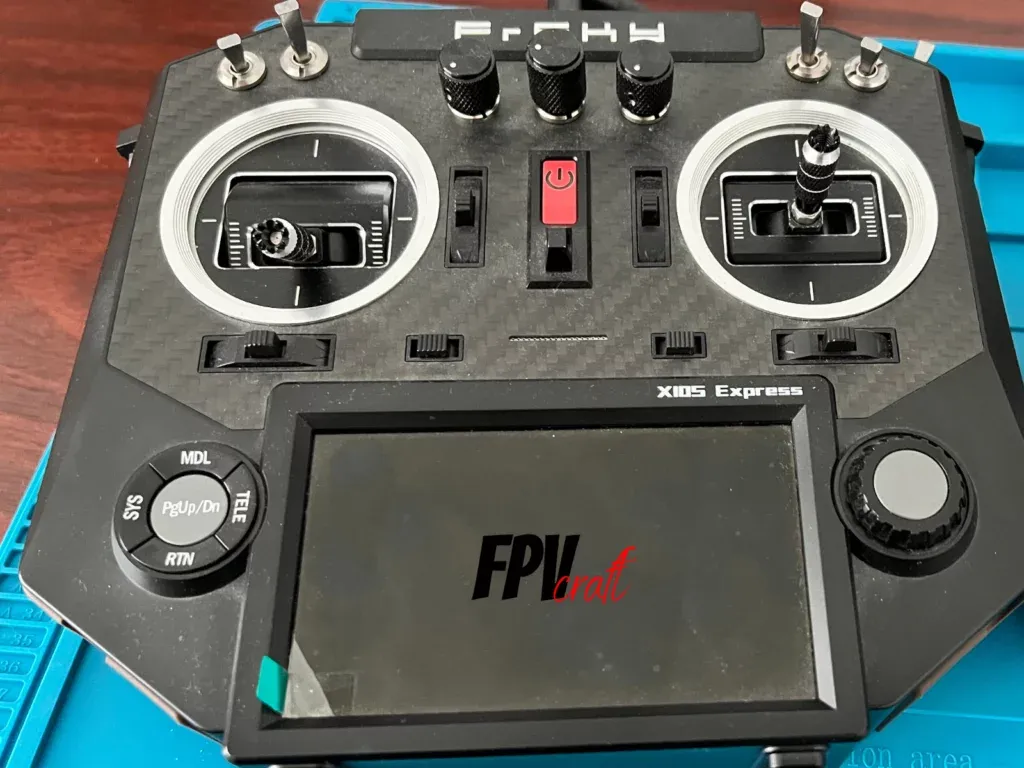
Now that you know what you want to pick up, digital or analog, what about the radio protocol?
These are many in number and often is the most complex system to ensure compatibility between the controller and an FPV drone.
What we do recommend, as we mentioned above, is to go with ELRS or Crossfire as they’re reliable, cheap, and excellent even for longer-range flights.
But you’ll have to ensure your drone has the same type of receiver compatible with your radio.
» RELATED: Large vs. Gamepad Style Radio Transmitter in FPV
And that’s not all.
Is your new FPV drone going to run on 4S or 6S? Maybe it’s a 2S tiny quad. Also, having suitable lipo batteries for your drone is essential. You’ll need to consider not only the voltage but also how many amps and the weight of the battery will go well with your custom quads.
Of course, you’ll never have to worry about this with the DJI FPV or Avata drones.
So, goggles for your transmission system, RC for the radio protocol, and suitable batteries. These are only the core elements to consider when you want to buy a custom FPV drone, so you buy the right accessories to ensure compatibility.
6. Preparing for safe storage and charging Lipos
Lipos. Did we mention lipos?
It’s not the same type of battery you often find in standard GPS drones and your phone, laptop, etc. These are safer to use.
But FPV drone lipos are pure batteries without any safety features behind them; you’ll have to charge them manually and set up the correct voltage and amps.
If you got it wrong, the Lipo battery can catch fire. The same thing can happen if the cells are not balanced when you charge it or if the battery is swollen or damaged from an impact.
And do you know how dangerous the Lipo fires are?
It’s like a welding torch pulling out high temperatures in a burst of flames. This will burn everything in its path.
» RELATED: Can FPV Drones Start a Fire?
I don’t want to scare you, but not a few FPV pilots burned down their houses because they didn’t safely store or charge the Lipo batteries.
So, to charge and store, ALWAYS do it in a thick and strong metal box, such as an ammo box. If anything goes wrong in there, the fire will not extend beyond it.
Maybe there’s a better person to explain FPV fires and how to charge and store lipos safely. Here’s a video from Joshua Bardwell.
7. Go with a 3.5-inch or smaller quad first.
Some pilots will recommend you go straight away with a 5-inch quad when you start. Many others will contradict this advice. Same as I.
Getting a 5-inch quad when you just started out into the hobby is like getting a Ferrari after you have acquired your driver’s license.
It’s very fast and dangerous, and you can easily crash, damage, or even worse.
That’s why you don’t start with big drones straight away. Have a smaller one first, maybe a 3.5-inch or even smaller. You can go as well with a micro drone or cinewhoop.
You need to get used to FPV drones, flying them, and how to control and land. 5-inch quads are the worst to start with, as with a slight push of the throttle, the drone can reach even 80+ mph speeds in an instant.
8. Study how to change parts & have an allocated budget.
Even before buying your first quad, it’s good to know how you should manage if you crash it and need to repair it. I mean, many times you smash a custom quad, those will be fine, but sometimes, it will break an arm or motor, and you can burn the ESC or damage your camera.
It’s not the worst approach if you know you’ll get stuck with an FPV quad. Order some extra compatible parts and have them there in case you crash it so you can change it.
Because if now, your drone will sit on the repair bench until your parts arrive from God knows where. Ordering from Aliexpress or different China shops can take even a month or more for the parts to arrive.
That’s why it’s an excellent approach to have some spare parts when you have extra cash to burn with this hobby.
But for this, you’ll have to learn and study how to repair and change parts of a drone. Don’t overstress it; there are so many videos on YouTube and FPV creators to follow. If you have a bit of time off, sometimes you can watch others how they repair their FPV quads.
That’ll make a big difference. Also, there are many Facebook or Reddit FPV groups where you can ask questions, talk to others, and take advice about repairing a drone.
9. Review your plan and the steps to take
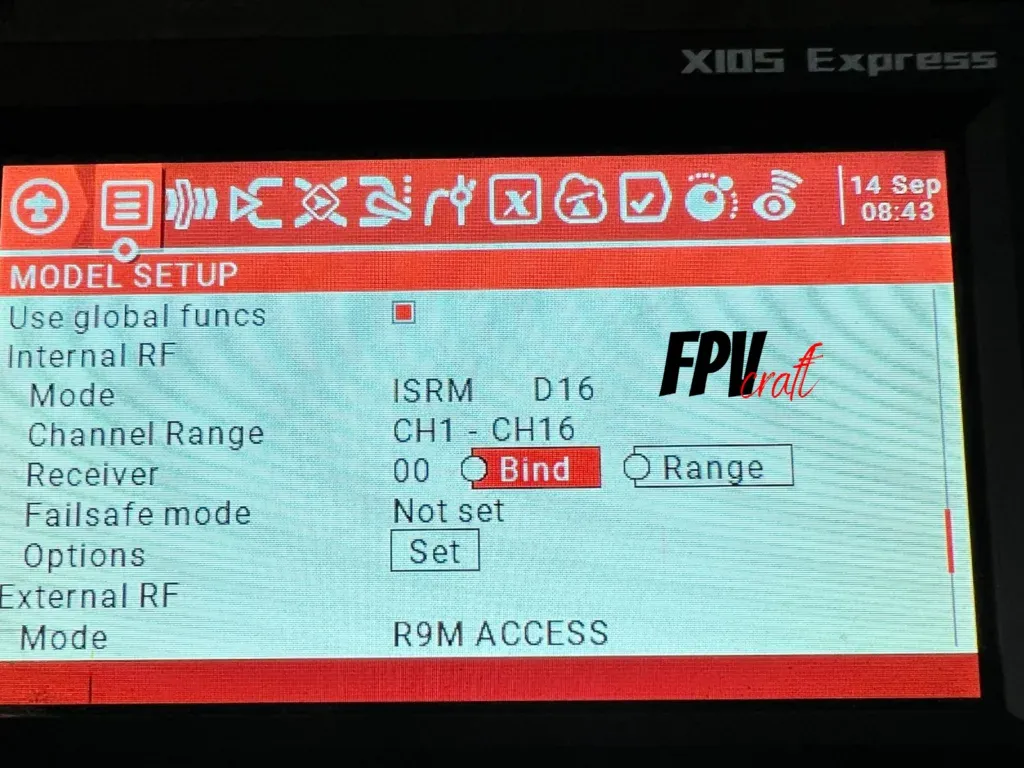
Now that you have an idea of what you need, you have to make sure you take these steps in order and have a good plan, so you won’t be benched for too long before you start flying FPV drones.
Therefore, ask yourself these questions:
- Do I have an FPV sim? Did I train enough in it to ensure I’m okay with flying acro?
- Should I simply go with the DJI FPV or Avata, or should I get a custom drone?
- If I get a custom drone, what VTX and transmission protocol? Can I find compatible goggles and controllers, so even afterward, if I want more FPV quads, can I be compatible with those?
- Can I ensure safe Lipo charging and storage? What charger should I also get?
- Do I have enough knowledge or resources to get in case I must repair my quad? What about some extra parts, from where can I order them and how long until they arrive?
- Are there any other FPV pilots around me to go out with? FPV is better in two or more!
- What about the FPV drone laws? How do I register my drone, myself as an operator, and ensure I follow the drone laws in my country; also, do I need a spotter with me to fly legally? (yes, you do)
- The final question would be: Is this a hobby I will stick to in the future or something I just want to try? This should establish your overall budget and what FPV quads to get. But remember, always start with an FPV simulator to get the feel of flying an FPV quad.
» RELATED: How to Adjust Gimbal Tension on FPV Radio Transmitters

